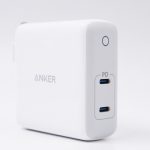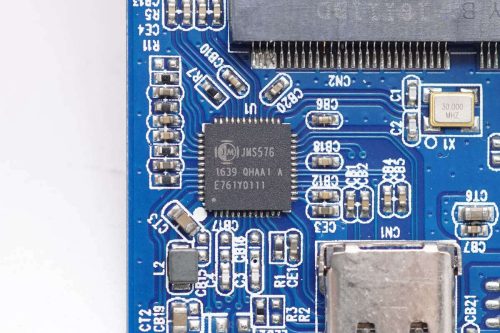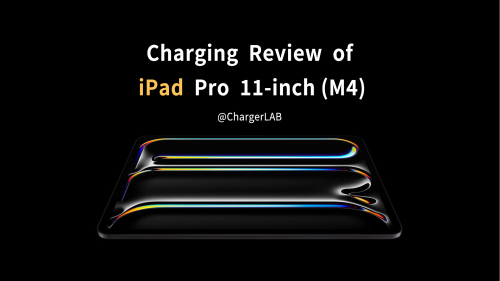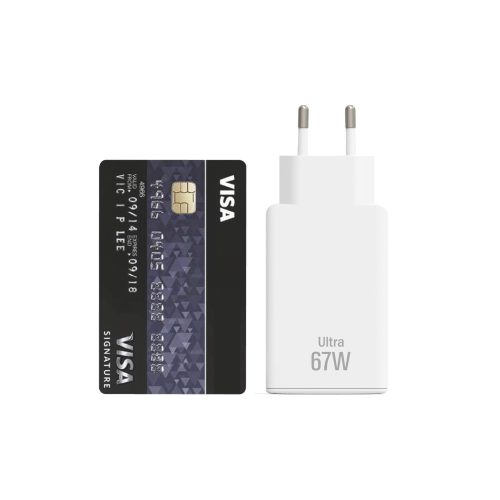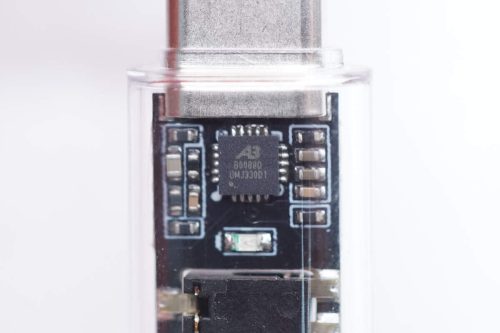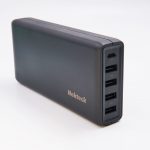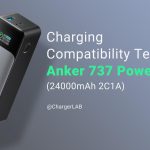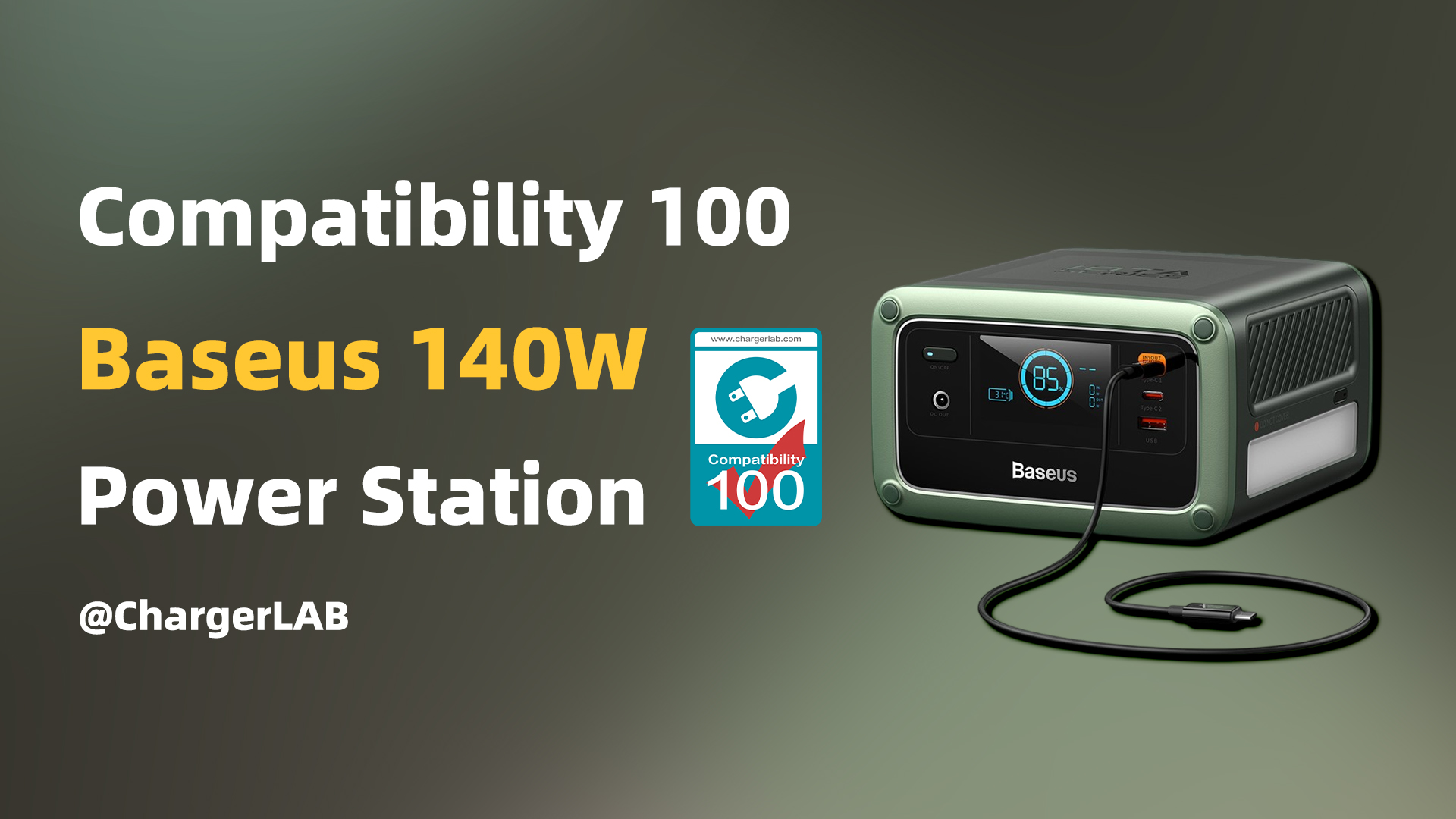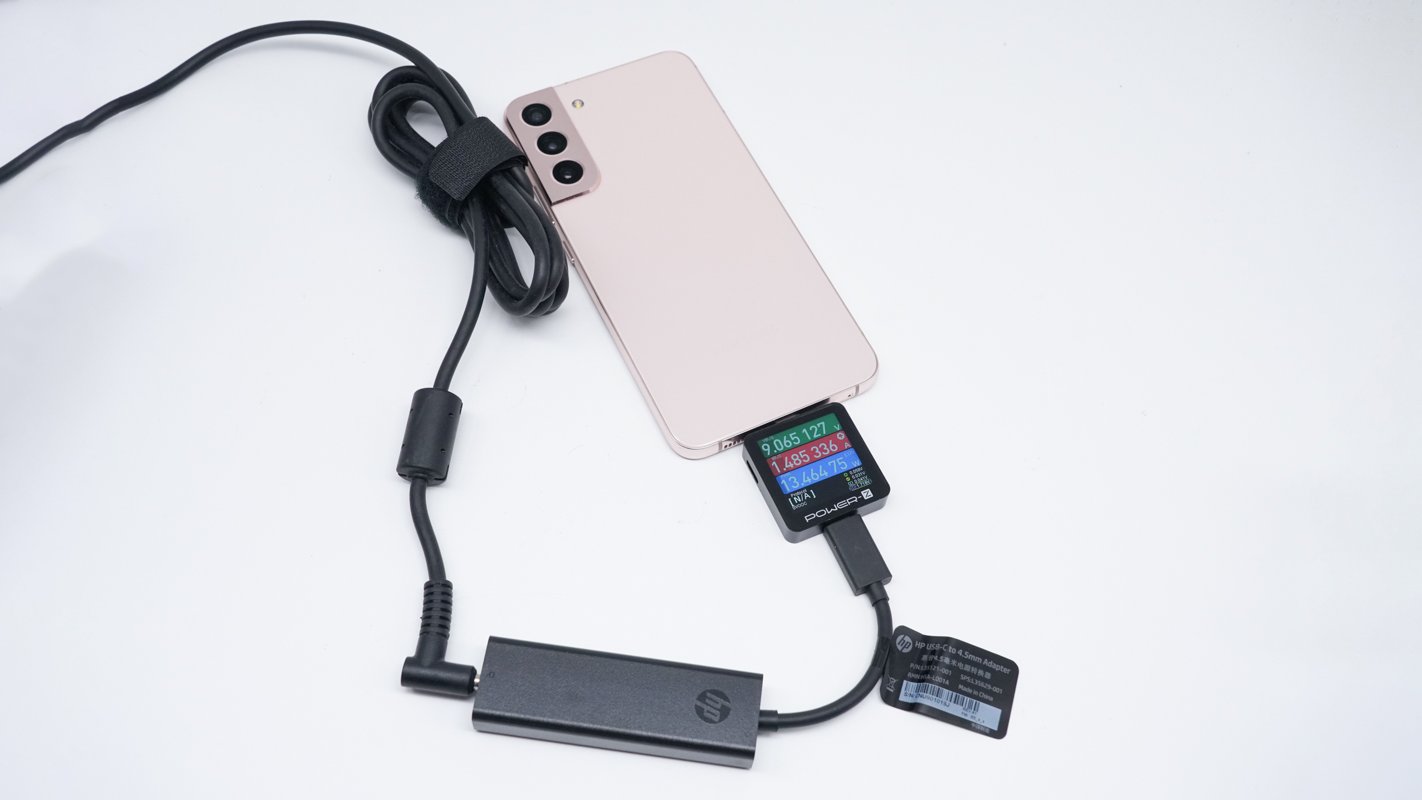GaN, or Gallium Nitride, is one of the newer types of material that can be used to produce semiconductors, and the key advantage is GaN’s increased efficiency over traditional silicon-based components. When it comes to charging, GaN offers up to 40% less power loss in a footprint that’s 1/15th the size, making it ideal for an application like this. You may be amazed by the performance and compactness of the Atom PD 1 that we reviewed earlier. Today we are taking an in-depth look at its new sibling, the ANKER PowerPort Atom PD 2 (A2029) which is also GaN-powered but offers dual ports with 60W max power.
I Unboxing

Classic ANKER white box with blue accents.

ANKER's slogan and patterened texture.

Model: A2029
Weight: 178g (6.28 oz)
Size: 68*69*28mm (2.68 x 2.72 x 1.14 in)
Made in China
Input: 100-240V~ 1.7A 50-60Hz
Single Port Output: 5V/3A, 9V/3A , 15V/3A , 20V/3A
Dual Port Output: 5V/3A , 9V/3A , 15V/2A , 20V/1.5A

The charger lays inside the blue paper tray.

Package contents: charger, user manual, warranty card, qualification certificate, and list of hazardous substances in electronic products.

A classic ANKER charger design in glossy white which is made of flame-retardant plastic.

The output panel is light gray with a matte finish. It has 2 USB-C ports which are all in signature Anker blue color with PD lettering on the top. There is a ring-shaped power indicator on the left, which emits blue light when the power is turned on.

Close-up of the LED indicator.

Foldable prongs offer better portability while two-wing design provides greater stability.

Close-up of the two-wing design.

Specifications on the bottom.

Compared to the Apple 61W PD charger, the ANKER PowerPort Atom PD 2 is about 15% smaller. Dimensions: 68*69*28mm (2.68 x 2.72 x 1.14 in).

Compared to the Apple iPhone XS Max.

Compared to a 1 Yuan RMB coin.

It weighs 181.4g (6.4 oz)
Despite the use of GaN technology, the size and weight control of the ANKER PowerPort Atom PD 2 is not particularly outstanding. But please note it offers two USB-C ports instead of one.
II Review
1. Charging protocols test
1) Single port test

With ChargerLAB Power-Z KT001 USB power tester, we know that its upper USB-C port supports DCP protocol.

PDO information reveals it supports PD2.0 quick charging output in 5V/3A, 9V/3A, 15V/3A, and 20V/3A, 60W max.

The lower USB-C port supports the DCP protocol as well.

The two USB-C ports share the same PDO reading.
1) Dual port test

Using two ChargerLAB Power-Z KT001 USB power testers, we know that each USB-C port supports DCP protocol.

And they support PD2.0 quick charging output in 5V/3A, 9V/3A, 15V/3A, and 20V/3A, 60W max at the same time.
2. Compatibility Test
1) Smart devices

Charging the iPhone XS Max, we are getting 9.10V 2.35A 21.42W, under PD protocol.

Charging the iPhone XS, we are getting 9.11V 2.2A 20.12W, under PD protocol.

Charging the iPhone XR, we are getting 9.10V 2.44A 22.22W, under PD protocol.

Charging the iPhone X, we are getting 9.12V 1.92A 17.54W, under PD protocol.

Charging the Huawei P30 Pro, we are getting 9.13V 1.41A 12.97W, under PD protocol.

Charging the Huawei Mate 20 Pro, we are getting 9.13V 1.8A 16.49W, under PD protocol.

Charging the Samsung Galaxy S10+, we are getting 9.13V 1.54A 14.15W, under PD protocol.

Charging the Mi9, we are getting 9.12V 1.9A 17.36W, under PD protocol.

Charging the iPad Pro 11-inch, we are getting 15.13V 1.98A 30.11W, under PD protocol.

Charging the iPad Pro 10.5-inch, we are getting 15.13V 2A 30.34W, under PD protocol.

Charging the iPad Air3, we are getting 15.13V 2.08A 31.5W, under PD protocol.

Charging the iPad mini5, we are getting 15.16V 1.12A 17W, under PD protocol.

Charging the iPad Air2 which doesn't support PD, we are getting 5.08V 2.45A 12.47W, under Apple 2.4A protocol.

Charging the Nintendo Switch, we are getting 15.16V 1.02A 15.54W, under PD protocol.

However it can't charge the Nintendo Switch in TV mode. The Nintendo Switch in TV mode is quite picky on chargers in our experience.

Charging the MacBook Pro 13.3-inch 2018, we are getting 19.61V 2.93A 57.48W, under PD protocol.

Charging the Xiaomi Notebook Air, we are getting 19.67V 2.22A 43.71W, under PD protocol.

Charging the Huawei Matebook 13, we are getting 19.61V 2.83A 55.69W, under PD protocol.

Summarized above.
2) Power banks

Charging the ANKER PowerCore 10000 PD Power Bank (A1235), we are getting 15.12V 1.12A 17.02W, under PD protocol.

Charging the PowerCore Speed 20000 PD (A1275), we are getting 19.82V 1.34A 26.63W, under PD protocol.

Charging the Zendure ZDA8PDP power bank, we are getting 19.68V 2.98A 58.68W, under PD protocol.
3) Dual port output test

It can charge the Huawei P30 Pro and the MacBook Pro 13.3-inch 2018 at the same time, at the speed of 10.63W (8.89V/1.19A) and 28.82W (19.74V/1.46A) respectively, both under PD protocol.

It can charge the Mi9 and the MacBook Pro 13.3-inch 2018 at the same time, at the speed of 16.66W (8.73V/1.9A) and 28.83W (19.74V/1.46A) respectively, both under PD protocol.

It can charge the MacBook Pro 13.3-inch 2018 and the Huawei MateBook 13 at the same time, at the speed of 28.37W (19.56V/1.45A) and 27.35W (19.63V/1.39A) respectively, both under PD protocol.

It can charge the Zendure ZDA8PDP power bank and the ZMI QB820 power bank at the same time, at the speed of 29.94W (19.62V/1.52A) and 29.64W (14.77V/2A) respectively, both under PD protocol.
3. Step test
The maximum output power is an important benchmark to measure the quality as well as the capability of the charger. We use Power-Z KT001 to trigger various voltages, and then use EBC-A10H as the load. The current increases from 0, and the current increases by 0.1A each time until the charger hit the OCP (Over Current Protection) threshold, the voltage immediately shuts off. The measured data is as follows.

In the single-port mode, the maximum output in 5V is 4.64V/3.3A/15.31W; the maximum output in 9V is 8.6V/3.4A/29.24W; the maximum output in 15V is 14.56V/3.4A/49.5W; the maximum output in 20V is 19.19V/3.4A/65.24W. The actual maximum output in each voltage is larger than the nominal value, with a maximum of 5W margin reserved.
III Conclusion
Powered by GaN technology, the ANKER PowerPort Atom PD 2 is the latest and greatest dual port PD charger by ANKER. However, it is not surprisingly small and light as its sibling, the Atom PD 1. Simply put, if your devices support PD charging and your cables are right, the PD 2 can enable dual fast charging for all your USB-C devices including phones, tablets, power banks, and even laptops. But you definitely have to pay a premium for dual 20V/1.5A PD charging.
Pros:
Elegant design and finish with foldable prongs.
Dual 20V/1.5A 30W and single 60W max charging.
Stable performance.
Cons:
Relatively expensive ($54.99).
Could be smaller and lighter.
Does not support charging Nintendo Switch in TV mode.
Note: ChargerLAB is reader-supported. Our editors independently research, test, and recommend the best products. We may earn commissions on purchases made from links on our site.
Source: chongdiantou

